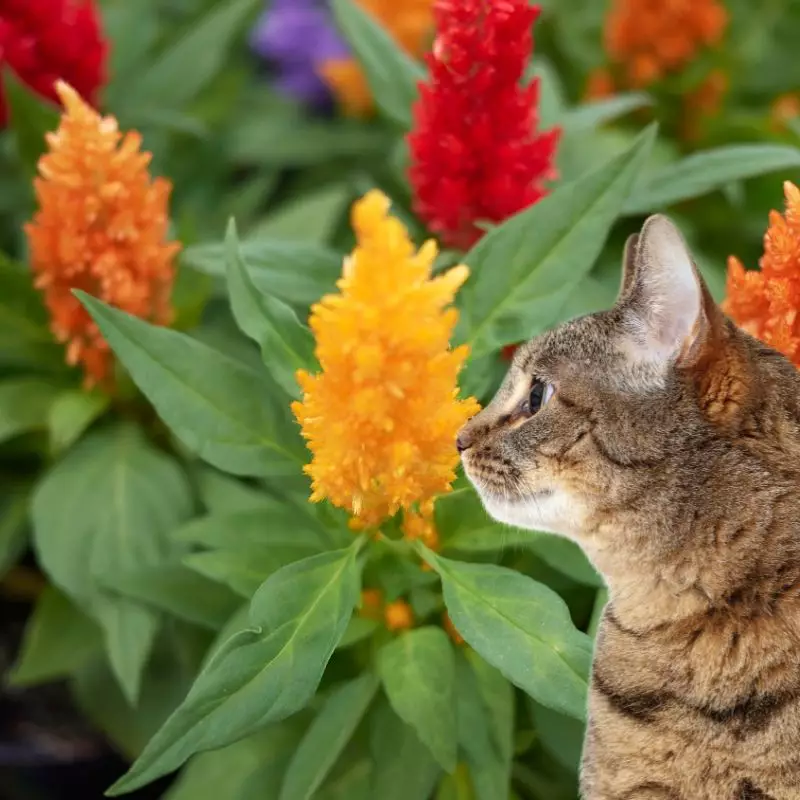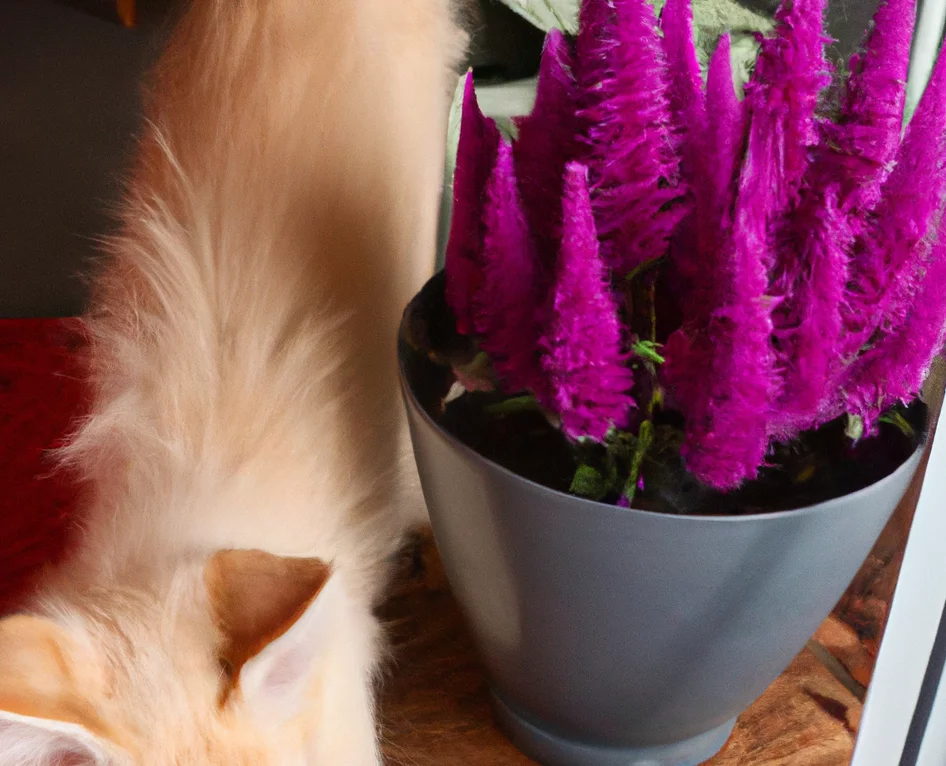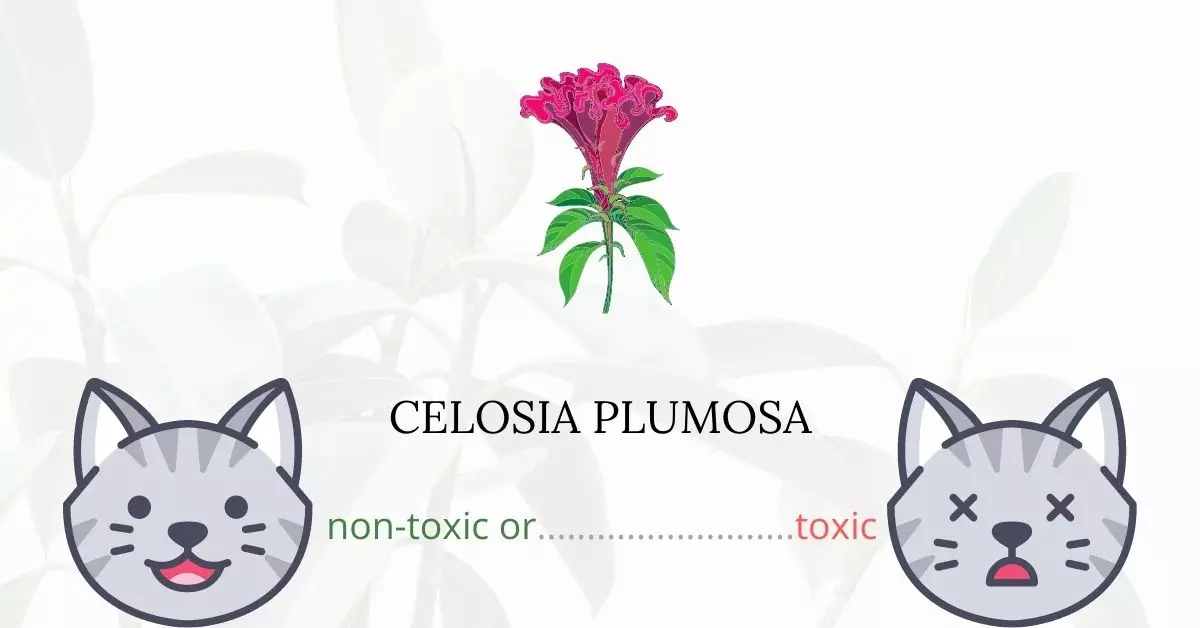Celosia Plumosa is considered safe for cats.
This article was crafted in close collaboration with a team of experienced DVMs (doctors of veterinary medicine). Leveraging their expertise, combined with research from high-authority websites such as the ASPCA and PetMD, we aim to provide accurate and up-to-date information on the potential risks various plants, including Celosia Plumosa, may pose to cats.
The American Society for the Prevention of Cruelty to Animals (ASPCA) has listed Celosia Plumosa as a non-toxic plant not only for cats but also for dogs and horses. While these blooms can be a vibrant addition to gardens, it’s essential for cat owners to be aware. Even though Celosia Plumosa is safe, there are certain precautions and reminders that should be noted to ensure the wellness of your feline friends.
Can Cats Eat Celosia Plumosa?

Yes, cats can eat Celosia Plumosa and not suffer from severe repercussions. But, this does not mean that you can let your cat finish off your Celosia Plumosas at home or give it to them as regular food.
Generally, plants are not suitable for cat consumption because they are obligate carnivores. Carnivorous animals have a hard time digesting plant matter. This is because they do not have the adequate enzymes to completely digest plants. Thus, cats may suffer from indigestion if they have eaten excessive amounts of plants.
Another factor that may cause cats to react negatively after eating a plant is the chemicals used on the plant such as commercial fertilizers and insecticides. If your cat happens to eat a portion of the plant with chemical residues, it may develop poisoning symptoms.
What is Celosia Plumosa?

Celosia Plumosa is a tropical herbaceous plant known for its vivid colors. Its lanceolate to elliptic leaves are silky and delicate to touch. Older Celosia Plumosa leaves have a larger base than younger, narrower leaves. It has fleshy stems, and red blooming variants may have crimson stalks. Celosia Plumosa blossoms are tall and erect feathery spikes at the top of stalks that can be trimmed and preserved. Red, yellow, or orange blooms can last for up to two months.
This Amaranthaceae plant is commonly known as Cockscomb, Silver Cockscomb, and Plumed Cockscomb. It is commonly grown as garden ornamental plants.
Keeping Cats Away From Celosia Plumosa

You should train your cats to stay away from your plants. If they are trained to avoid houseplants, they will also tend to avoid outdoor plants. You start training them by spraying water on them whenever they try to touch your plant. Saying “no” loudly or making loud noises when they get near your plants will also alert them. Training them may take time but it will be beneficial for you both and your plants will thank you, too.
Using natural deterrents like vinegar may also help in deterring your cats. Dilute the vinegar into water and spray them on your plants. Cats dislike the sour taste and smell of vinegar so they will most likely avoid your plants. Although, there are cats who are unaffected by this.
Plants to Avoid For Your Cats
If you are a cat owner and unsure if the plants growing in your yard are harmful to your cats, check out this list of toxic plants for cats. You can also check our list of non-toxic plants for cats.





